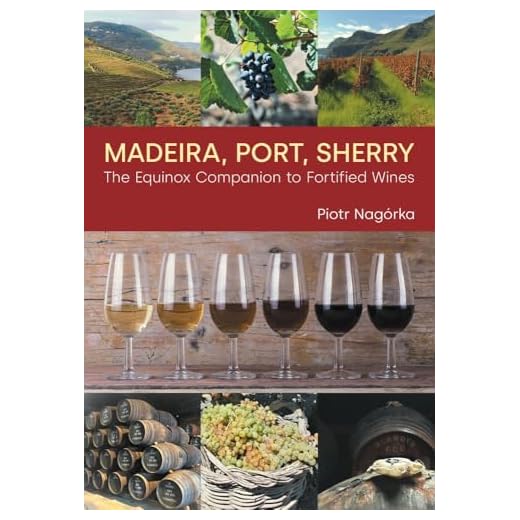



For those seeking a delightful experience, I recommend exploring a bottle of Port or a fine dessert-style option like Brachetto d’Acqui. These selections are renowned for their luscious sweetness, making them perfect companions for various occasions.
Port, particularly Ruby and Tawny, offers rich flavors of dark fruits and chocolate, with a sweetness that lingers on the palate. It pairs beautifully with cheeses or chocolate desserts. On the other hand, Brachetto d’Acqui, an Italian gem, presents a light, bubbly profile with hints of strawberries and raspberries, making it an excellent choice for lighter fare or even as a refreshing aperitif.
Another noteworthy mention is Lambrusco, especially the sweeter styles that showcase vibrant berry notes. This sparkling red complements charcuterie and can elevate any gathering. For those who enjoy something unique, consider a bottle of Banyuls, a fortified wine from France that balances sweetness and complexity, perfect for savoring on its own or with rich desserts.
Top Choices for Sweet Red Varietals
For those seeking a delightful sugary profile, I highly recommend trying a Lambrusco. This Italian gem often presents a refreshing fizz combined with rich berry flavors, making it an excellent choice for casual sipping or pairing with lighter dishes.
Another standout is the Brachetto d’Acqui, also from Italy. This wine showcases fragrant notes of strawberries and roses, complemented by a hint of sweetness that can be quite captivating. It’s a wonderful accompaniment to desserts or enjoyed on its own.
Don’t overlook Port, particularly the ruby style. With its rich, concentrated flavors of dark fruits and chocolate, this fortified drink delivers a luscious sweetness that’s perfect for pairing with strong cheeses or chocolate desserts.
For a unique experience, try a Sweet Shiraz. This Australian variety often has jammy fruit notes, peppery spice, and a pleasing sweetness, making it versatile for various culinary pairings or simply enjoyed by itself.
Lastly, consider a Moscato-based blend. While typically associated with white, some producers create delightful red variations that boast aromatic sweetness, perfect for those who appreciate a lighter, fruit-forward option.
Understanding Sweetness in Red Wines
For those seeking options with a high level of sugar content, consider the following types:
- Port: This fortified variety is known for its rich sweetness, often enjoyed as a dessert option.
- Brachetto d’Acqui: A sparkling choice from Italy, this wine boasts fruity notes and a delightful sweetness.
- Lambrusco: Certain styles, particularly those that are slightly sparkling, can offer a pleasant sweetness balanced with acidity.
- Sweet Shiraz: Some producers create a sweeter version of this robust varietal, enhancing its fruit-forward character.
Understanding the sweetness scale can also aid in selecting the right bottle. The residual sugar (RS) levels are key indicators:
- Dry: Less than 1 g/L of RS.
- Off-dry: 1-10 g/L of RS.
- Semi-sweet: 10-30 g/L of RS.
- Sweet: More than 30 g/L of RS.
Food pairings can enhance the experience of these richer options. For instance, pairing a sweet fortified style with chocolate desserts or rich cheeses can create a harmonious balance. Additionally, a clean environment enhances the tasting experience, so don’t forget to have a best shower scrubber brush handy for your glassware.
Exploring sweetness in these selections allows for a delightful tasting journey, catering to diverse palates and preferences.
Top Sweet Red Wine Varieties to Try
For those seeking delightful options with a touch of sugar, consider exploring these exceptional varietals. Each offers a unique flavor profile, perfect for satisfying your palate.
Port
A fortified style from Portugal, this beverage stands out with its rich flavors of dark fruits, chocolate, and spice. Look for Ruby Port for a more vibrant experience, or opt for Tawny Port, which provides a nuttier profile with age.
Zinfandel
Known for its jammy characteristics, this American classic often boasts notes of blackberry, raspberry, and spice. Certain versions, especially those labeled “Late Harvest,” can deliver a luscious sweetness that pairs beautifully with barbecue and chocolate desserts.
Another excellent choice is Brachetto d’Acqui, an Italian sparkling option that combines sweetness with refreshing effervescence, making it a perfect match for fruit-based dishes or light pastries.
Experiment with these selections to discover what resonates with your taste buds. Each offers a distinctive experience that highlights the diverse world of sweeter options in the realm of fermented grapes.
How to Choose Sweet Red Wine for Your Palate
Start by identifying your preferred flavor profile. If you enjoy fruity notes, consider a varietal like Zinfandel, which often exhibits jammy characteristics. For a more balanced sweetness with spicy undertones, look into a Shiraz. If you’re inclined towards dessert-like qualities, a fortified option such as Port could be your go-to.
Next, examine the residual sugar content. Wines labeled as “off-dry” typically contain a moderate level of sweetness, while “sweet” or “dessert” labels indicate higher sugar levels. Always check the wine’s specifications or consult with your retailer for precise sugar details.
Consider the wine’s body and tannin structure. A fuller-bodied option with softer tannins can enhance the perception of sweetness. For example, Malbec often provides a rich mouthfeel that complements its fruity flavors, making it an excellent choice for those seeking sweetness.
| Varietal | Flavor Profile | Sweetness Level |
|---|---|---|
| Zinfandel | Jammy, fruity | Medium |
| Shiraz | Fruity, spicy | Medium to High |
| Port | Rich, dessert-like | Very High |
| Malbec | Rich, dark fruit | Medium |
Explore regions known for producing sweeter options. California and Australia stand out for their successful varietals, while Italy’s Lambrusco can surprise with its effervescence and sweetness. Don’t hesitate to experiment with selections from different areas to discover your perfect match.
Lastly, pairing is crucial. Sweet options can beautifully complement rich dishes or desserts. Test combinations with chocolate or spicy cuisine to elevate your tasting experience. Take notes on what appeals to your palate and revisit those favorites for future occasions.
Food Pairings with Sweet Red Varietals
For a delightful experience, I recommend pairing late-harvest Merlot with a rich chocolate dessert. The wine’s fruit-forward nature complements the cocoa, creating a harmonious balance that enhances both elements.
Another excellent match is Brachetto d’Acqui with a selection of cheeses, particularly creamy blue cheese. The sweetness cuts through the saltiness, while the wine’s effervescence refreshes the palate.
Savoury and Spicy Combinations
When enjoying a fruity Grenache, consider serving it with barbecue dishes. The smoky, tangy flavors of the meat contrast beautifully with the wine’s sweetness, resulting in a delicious pairing.
For a unique twist, try a sweet Shiraz with spicy Asian cuisine. The wine’s bold fruitiness and subtle spice enhance dishes like sweet and sour chicken or Korean BBQ, creating an exciting flavor profile.
Dessert Pairings
Sweet Zinfandel is fantastic with berry desserts, such as a mixed berry tart. The wine’s berry notes amplify the fresh flavors of the dessert, making for a delightful end to any meal.
Additionally, ruby Port pairs exceptionally well with chocolate-covered strawberries. The rich, velvety texture of the Port complements the sweetness of the fruit, creating a luxurious treat.
Common Misconceptions About Sweetness in Wines
Many enthusiasts mistakenly equate sweetness with low quality or cheap options. In reality, some of the most exquisite bottles feature a balance of sweetness that enhances their complexity.
Another prevalent myth is that all dark-hued varieties are inherently dry. Several grape types, like Zinfandel and Lambrusco, can showcase delightful sweetness while displaying rich flavors and aromas.
People often assume that residual sugar is the sole indicator of sweetness. Factors such as acidity, tannins, and alcohol content also contribute to the perception of sweetness. A high acid level can make a moderately sweet beverage taste drier.
There’s a belief that only dessert varieties can be enjoyed with food. However, many off-dry selections pair beautifully with savory dishes, creating a captivating contrast that elevates the dining experience.
Some individuals think that sweetness is solely a characteristic of specific regions. While certain areas are renowned for their sweeter selections, numerous styles from various locales can satisfy those with a preference for a sugary profile.
Lastly, misconceptions about aging may lead to the idea that sweet beverages should be consumed immediately. Aging can enhance the complexity and character of many of these offerings, transforming their profiles and deepening their flavors over time.








